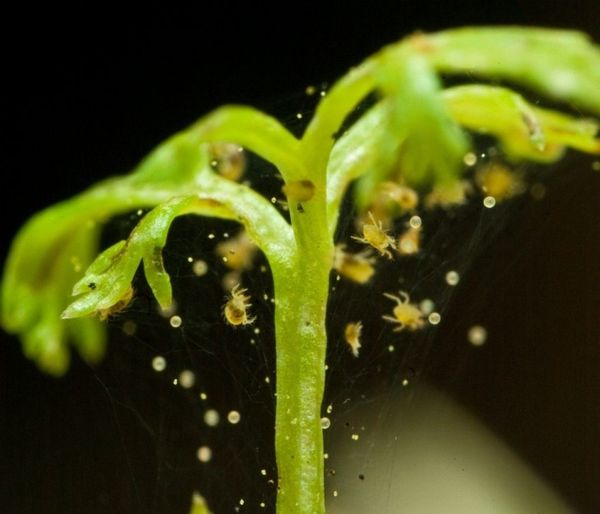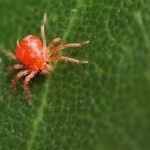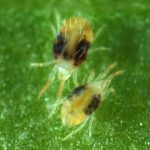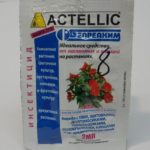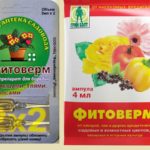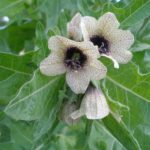Spider mite is considered one of the most ubiquitous. It affects almost all plants, with the exception of water. It is not a shame, but any indoor plant over time will have to face a similar problem. And if there are flowers in the room, then it is recommended to prepare for a long battle with this harmful insect, because it is almost impossible to prevent its attack.
The tick is able to get into the room in any way - through the windows, brought on a flower bouquet, in the folds of outer clothing, with the ground for planting. And if you have already discovered the presence of an unpleasant enemy, it is necessary to take all measures for its complete destruction.
Table of contents
What does a spider mite look like?
The size of an insect depends entirely on the level of its fatness. The length of the female reaches 0.4 - 0.6 mm, the male is not so big - no more 0.45 mm. Pests can look like an ellipse, soft-bodied, the upper part of the bulge is convex, the bottom - even.
At the larval stage, the pest is transparent, colored light green or green brown. On the sides there is a pair of distinct dark spots formed by transparent sacs of the midgut. From August to the beginning of the spring season, females differ orange red shade. The adult has eight legs, whereas the larva has only six.
- Red spider mite
- Atlantic spider mite
Of the most famous pests are distinguished:
- red spider mite;
- red-foot tick;
- spider mite Savzdar;
- Atlantic spider mite.
In the interweaving of the web lives several generations. Mite breeds pretty quickly. Individuals mature in about three weeks from the moment the female lays the eggs.
Insect reproduction can be adversely affected by lowering the temperature, high levels of humidity. These same conditions can slow the development of the larvae themselves. If the climate improves, then the danger of a massive infection is likely.
What plants are striking at home and in the garden
Habitat are upper and lower sides of foliage, stalks and fruits. If the number of pests is large, then we can distinguish a spider web among plants, among which pests are crawling. Somewhat later, the web is stretched across the leaves, the stem is woven around it.
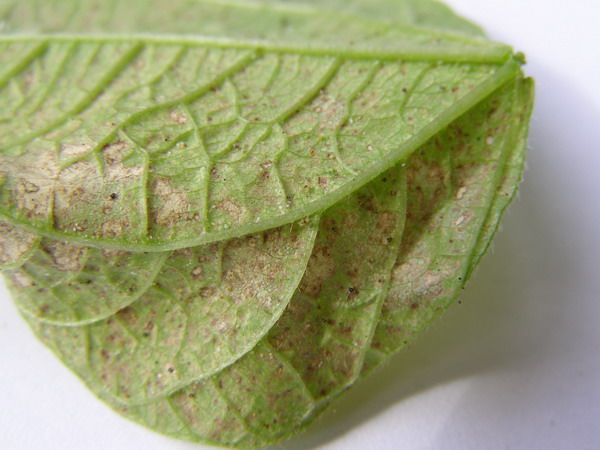
The mite is capable of infecting indoor flowers, cherries, vegetable and fruit crops, trees in the garden and in the home. Roses, chrysanthemums, crotons are most often affected by it.
How to deal with spider mite in the garden
Unfortunately, there is still no control method that can kill a spider mite the first time. In most cases required two or more treatmentsuntil the last parasite disappears from your plants. And in such a fight all means are good.
The use of special drugs
With a pest better help fight acaricides and insectoacaricides. From a large number of drugs emit the following:
- Actellic - toxic composition. The tool is designed to combat ticks, it is recommended to treat them for mass lesions, when other drugs do not give the desired effect. When spraying plants it is necessary not to forget that the drug is highly toxic. Treatments should be carried out in the open air or indoors with good ventilation;
- Fitoverm - Another drug that helps get rid of spider pests. It is less toxic, allows you to work even in small spaces. But do not relax - do the processing quickly, then wash your face and hands, change your outerwear. To get rid of the tick by such treatments, up to four procedures should be carried out at weekly intervals;
- Neoron - With the help of such a chemical means it is possible to destroy not only adult individuals, but also their eggs. You just need to sew a couple of treatments, and the plants will be saved .;
- In addition to these compositions, you can apply sanmight, actophyte, acarin, vermitek and others. Many claim that it works fine for the pest Aktar. Such a tool is enough to shed the soil around the plant to get rid of the problem.
- Actellic
- Fitoverm
- Neoron
Use of folk remedies
- Ultraviolet - the tick does not tolerate it, and during the day it tries to hide from the sunlight under the foliage. It is enough to light the plants once a week for a couple of minutes to improve their resistance to many diseases. Such a procedure is not dangerous for plants if you use special UV lamps;
- Alcohol processing - gives great results. A surface of leaves is wetted with a cotton wool or from a small sprayer, after which it takes a little time for alcohol to evaporate completely. Alcohol is used in its pure form, it is not diluted with water, otherwise burn spots may remain on the surface of the foliage during its evaporation. Approximately seven days later, treatment is recommended to be repeated;
- Black helen - poisonous plant. Collect it should fall or with the onset of spring.Use it in the form of infusions, powders and decoctions. To prepare the infusion take a pound of crushed dry plants, pour a bucket of water, insist twelve hours. Then everything is filtered, several tens of grams of soap are added. The decoction is made from dried herbs. It is boiled for several hours, cooled, filtered, diluted with water to ten-liter volume.
- Garlic - five hundred grams of garlic must be crushed, pour three liters of water, infuse in a dark room for five days, drain. 60 ml of the infusion is diluted in a bucket of water, some liquid soap is added, and spraying can be performed;
- Gray alder - water in the amount of ten liters is heated, add two to four hundred grams of crushed plants, insist three hours. Infusion is recommended to use immediately. Plants are treated for the first time after foliage has blossomed. Repeat the procedure performed after flowering. If necessary, processing is performed again, after waiting two weeks.
- Helen black - to fight pest use a decoction
- Garlic infusion
Preventive methods of spider mites on plants
The main premise of the pest's attack is dry air, a low level of its humidity. Therefore recommended air the room, humidify the air, conduct watering.
Spraying the plants, you should be careful - the water should not remain for a long time in the axils of the foliage, so as not to cause rotting. Especially it is necessary to be careful in winter time, when after the treatment the water evaporates longer than usual.
In order to reliably protect your plants from the harmful parasite, it is recommended to periodically carefully examine them for the appearance of cobwebs and insects. Timely action will help you save your culture, expelling an unwanted enemy forever. And not only chemical preparations will help, but also simple folk methods that remain always reliable.
